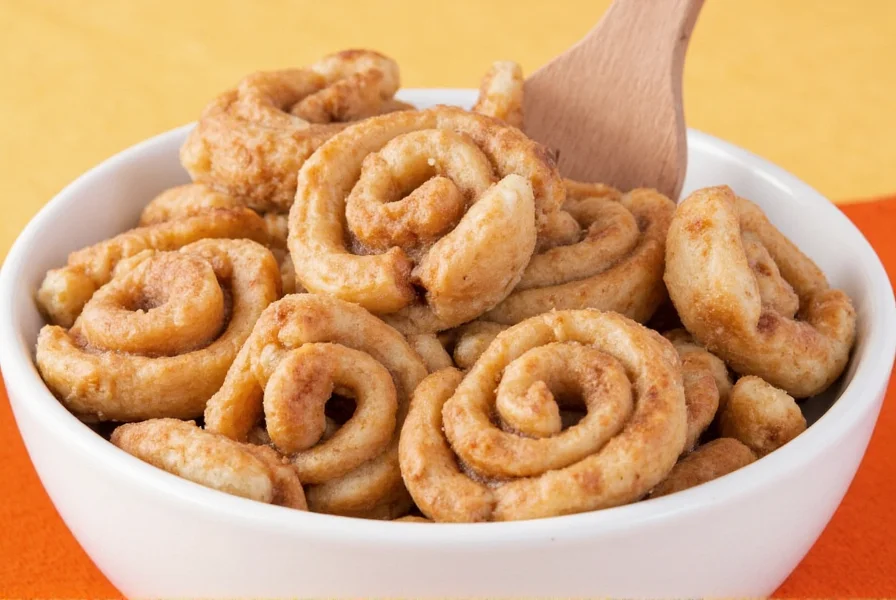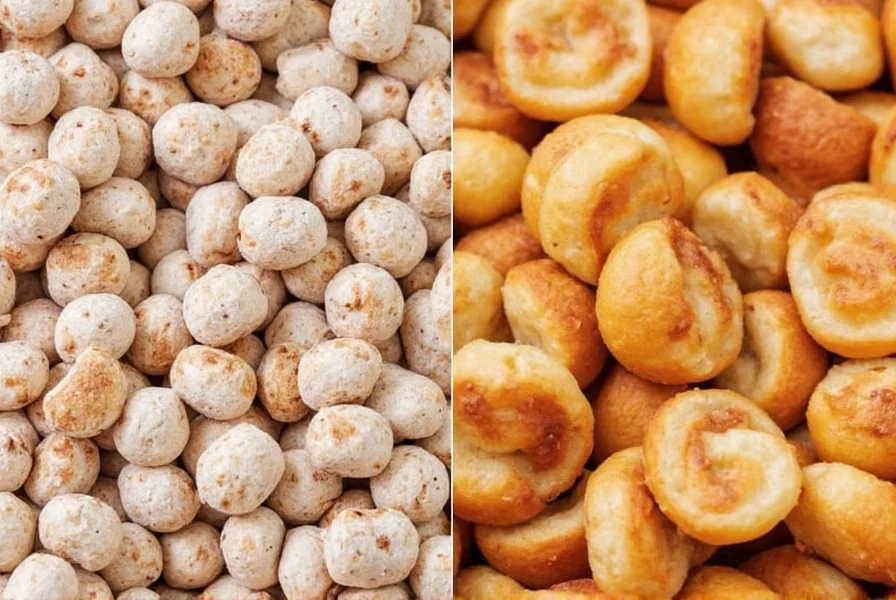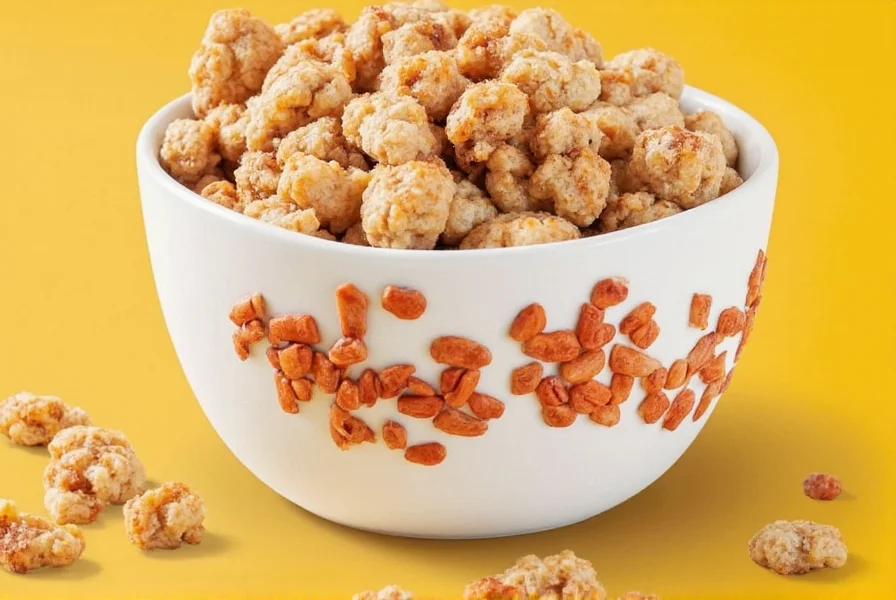Breakfast enthusiasts seeking the comforting taste of bakery-style cinnamon rolls without the baking effort have embraced cinnamon roll cereal as a convenient alternative. This innovative product category bridges the gap between morning cereal routines and indulgent pastry cravings, offering a familiar flavor profile in a format that fits standard breakfast habits.
The Origin Story of Cinnamon Roll Cereal
The modern cinnamon roll cereal phenomenon began when Cinnabon, the famous bakery chain known for its gooey cinnamon rolls, partnered with Post Consumer Brands to launch Cinnabon Cinnamon Roll Cereal in 2018. This collaboration brought the iconic bakery flavor to supermarket cereal aisles nationwide. The product's immediate popularity demonstrated strong consumer demand for pastry-inspired breakfast options.
Prior to this commercial release, cinnamon roll-flavored cereals existed primarily as limited edition products or regional offerings. The Cinnabon partnership established cinnamon roll cereal as a legitimate category within the breakfast market, prompting other manufacturers to develop their own interpretations of this sweet breakfast concept.
Major Brands in the Cinnamon Roll Cereal Market
While Cinnabon remains the most recognized name in cinnamon roll cereal, several other brands have entered this flavorful market space:
| Brand | Product Name | Key Features | Availability |
|---|---|---|---|
| Cinnabon | Cinnabon Cinnamon Roll Cereal | Official bakery partnership, frosting-flavored swirls | Nationwide grocery stores |
| Post Consumer Brands | Honey Bunches of Oats Cinnamon Roll | Oat-based clusters with cinnamon flavoring | Major supermarkets |
| Kellogg's | Frosted Cinnamon Roll Cereal | Sweetened wheat squares with frosting bits | Seasonal limited releases |
| Private Labels | Various store-brand versions | More affordable alternatives | Regional grocery chains |
Taste Profile and Ingredient Composition
Cinnamon roll cereal typically combines several key elements to recreate the beloved pastry experience:
- Cereal base - Usually wheat or corn squares, sometimes oat clusters
- Cinnamon-sugar coating - Provides the signature spiced sweetness
- Frosting elements - Often white marshmallow bits or sweetened swirls
- Additional flavorings - Vanilla, brown sugar, or dough notes
The most authentic versions strive to capture the layered flavor experience of a real cinnamon roll - the sweet dough, the cinnamon swirl, and the creamy frosting. When prepared with milk, the cereal creates a sweetened milk reminiscent of the sauce that forms when eating an actual cinnamon roll.

Nutritional Considerations for Cinnamon Roll Cereal
As a dessert-inspired breakfast option, cinnamon roll cereal generally contains higher sugar content than traditional whole grain cereals. A typical serving (about 1 cup or 55g) usually contains:
- Calories: 190-220
- Total sugar: 12-16g (approximately 3-4 teaspoons)
- Whole grains: Minimal to none in most varieties
- Fiber: Typically 1-2g per serving
- Protein: Around 2-3g
Consumers seeking a more balanced breakfast might consider pairing cinnamon roll cereal with protein sources like Greek yogurt or nuts, or opting for smaller portions combined with a higher-fiber cereal. Some newer formulations have begun addressing these nutritional concerns by reducing added sugars or incorporating whole grains while maintaining the signature flavor.
Cinnamon Roll Cereal vs. Traditional Cinnamon Rolls
While cinnamon roll cereal aims to capture the essence of its bakery namesake, there are notable differences between the cereal and actual cinnamon rolls:
- Preparation time - Cereal requires no preparation beyond pouring, while traditional rolls need baking
- Texture experience - Cereal offers a crunchy-to-soft transition with milk, unlike the consistently soft pastry texture
- Flavor complexity - Real cinnamon rolls have layered dough, swirl, and frosting elements that are challenging to replicate in cereal form
- Nutritional profile - Most cinnamon roll cereals contain less fat but similar or higher sugar content than a single bakery cinnamon roll
- Portion control - Cereal servings are typically smaller than a standard bakery cinnamon roll
The cereal version provides a convenient way to enjoy the flavor profile with significantly less time investment, making it particularly appealing for busy mornings while still delivering that comforting cinnamon roll experience.
Creative Ways to Enjoy Cinnamon Roll Cereal Beyond Breakfast
While designed as a breakfast cereal, cinnamon roll cereal has found its way into various creative applications:
- Cereal milk - The sweetened milk left after eating makes an excellent base for smoothies or milkshakes
- Baking ingredient - Crushed cereal works well as a topping for desserts or mixed into cookie dough
- Yogurt parfait layers - Alternating with Greek yogurt creates a balanced sweet-tart breakfast
- Cereal bars - Combined with melted marshmallows for a no-bake treat
- Ice cream topping - Adds crunch and flavor to vanilla ice cream

Availability and Market Presence
Cinnamon roll cereal has transitioned from a novelty item to a relatively stable product category. Major national brands maintain year-round availability in most grocery stores, typically found in the same aisle as other flavored cereals. Some seasonal variations appear around holidays when consumers seek comforting flavors.
Online retailers have expanded access to cinnamon roll cereal, making it available even in regions where physical store selection might be limited. The product's popularity has also led to increased presence in convenience stores and coffee shop breakfast menus, where it's sometimes offered alongside traditional pastry options.
Consumer Reception and Cultural Impact
Social media has played a significant role in cinnamon roll cereal's popularity, with food enthusiasts sharing taste tests, creative uses, and comparisons between brands. The product has developed a dedicated following among breakfast lovers seeking to incorporate dessert flavors into their morning routine.
Food critics generally acknowledge that while cinnamon roll cereal doesn't perfectly replicate the bakery experience, it successfully delivers the core flavor profile in a convenient format. Many reviewers note that the cereal works best when consumers adjust their expectations - appreciating it as its own unique breakfast experience rather than a direct substitute for actual cinnamon rolls.
Frequently Asked Questions
Does cinnamon roll cereal contain actual cinnamon rolls?
No, cinnamon roll cereal does not contain actual cinnamon rolls. It's a breakfast cereal designed to mimic the flavor profile using cereal pieces coated with cinnamon-sugar flavoring and often including frosting-flavored bits. The cereal recreates the taste experience through flavor compounds rather than containing baked pastry elements.
How does the sugar content of cinnamon roll cereal compare to regular cereal?
Cinnamon roll cereal typically contains 30-50% more sugar than standard sweetened cereals. A one-cup serving usually has 12-16 grams of sugar compared to 8-12 grams in many popular sweet cereals. This higher sugar content reflects its dessert-inspired nature, designed to replicate the sweetness of bakery cinnamon rolls.
Can I make my own version of cinnamon roll cereal at home?
Yes, homemade cinnamon roll cereal is possible using plain cereal as a base. Start with a wheat or corn-based cereal, then create a coating mixture of melted butter, cinnamon, sugar, and a small amount of corn syrup or honey. Toss the cereal in this mixture, spread on a baking sheet, and bake at 300°F for 10-15 minutes until set. Some recipes also add white chocolate or marshmallow bits to mimic the frosting element.
Is cinnamon roll cereal suitable for people with dietary restrictions?
Most cinnamon roll cereals contain wheat and dairy-derived ingredients, making them unsuitable for gluten-free or strict dairy-free diets. They're also generally high in sugar, which may not align with low-sugar dietary plans. Some brands offer reduced-sugar versions, but consumers with specific dietary needs should carefully check ingredient labels as formulations vary between brands and may change over time.
Why has cinnamon roll cereal become popular despite its high sugar content?
Cinnamon roll cereal's popularity stems from its ability to deliver a comforting, dessert-like experience in a convenient breakfast format. Consumers increasingly seek nostalgic flavors and bakery-inspired options that fit busy lifestyles. The product satisfies emotional cravings for familiar comfort foods while requiring minimal preparation time. Its social media appeal and novelty factor have also contributed to sustained interest despite the higher sugar content.











 浙公网安备
33010002000092号
浙公网安备
33010002000092号 浙B2-20120091-4
浙B2-20120091-4